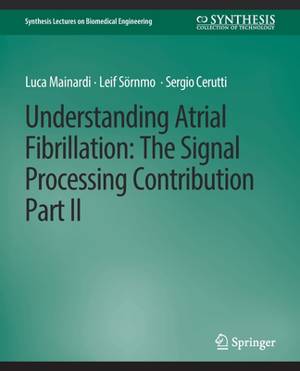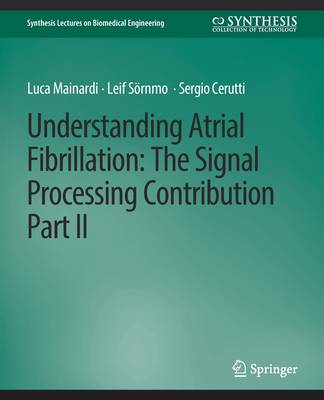
- Retrait gratuit dans votre magasin Club
- 7.000.000 titres dans notre catalogue
- Payer en toute sécurité
- Toujours un magasin près de chez vous
- Retrait gratuit dans votre magasin Club
- 7.000.0000 titres dans notre catalogue
- Payer en toute sécurité
- Toujours un magasin près de chez vous
Understanding Atrial Fibrillation
The Signal Processing Contribution, Part II
Luca Mainardi, Leif Sörnmo, Sergio Cerutti
34,95 €
+ 69 points
Format
Description
The book presents recent advances in signal processing techniques for modeling, analysis, and understanding of the heart's electrical activity during atrial fibrillation. This arrhythmia is the most commonly encountered in clinical practice and its complex and metamorphic nature represents a challenging problem for clinicians, engineers, and scientists. Research on atrial fibrillation has stimulated the development of a wide range of signal processing tools to better understand the mechanisms ruling its initiation, maintenance, and termination. This book provides undergraduate and graduate students, as well as researchers and practicing engineers, with an overview of techniques, including time domain techniques for atrial wave extraction, time-frequency analysis for exploring wave dynamics, and nonlinear techniques to characterize the ventricular response and the organization of atrial activity. The book includes an introductory chapter about atrial fibrillation and its mechanisms, treatment, and management. The successive chapters are dedicated to the analysis of atrial signals recorded on the body surface and to the quantification of ventricular response. The rest of the book explores techniques to characterize endo- and epicardial recordings and to model atrial conduction. Under the appearance of being a monothematic book on atrial fibrillation, the reader will not only recognize common problems of biomedical signal processing but also discover that analysis of atrial fibrillation is a unique challenge for developing and testing novel signal processing tools. Table of Contents: Analysis of Ventricular Response During Atrial Fibrillation / Organization Measures of Atrial Activity During Fibrillation / Modeling Atrial Fibrillation: From Myocardial Cells to ECG / Algorithms for Atrial Tachyarrythmia Detection for Long-Term Monitoring with Implantable Devices
Spécifications
Parties prenantes
- Auteur(s) :
- Editeur:
Contenu
- Nombre de pages :
- 122
- Langue:
- Anglais
- Collection :
Caractéristiques
- EAN:
- 9783031005046
- Date de parution :
- 05-12-08
- Format:
- Livre broché
- Format numérique:
- Trade paperback (VS)
- Dimensions :
- 190 mm x 235 mm
- Poids :
- 254 g

Les avis
Nous publions uniquement les avis qui respectent les conditions requises. Consultez nos conditions pour les avis.






